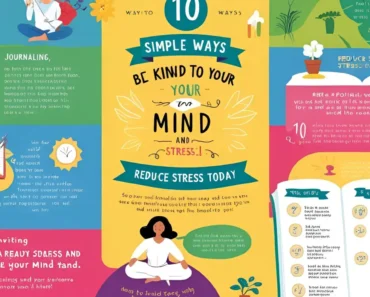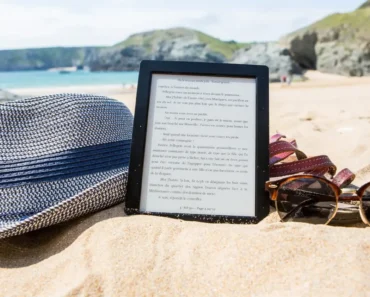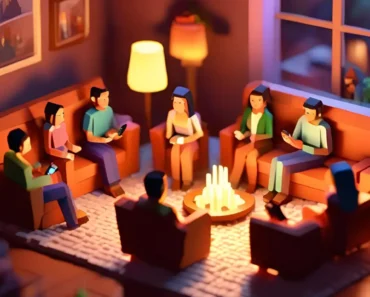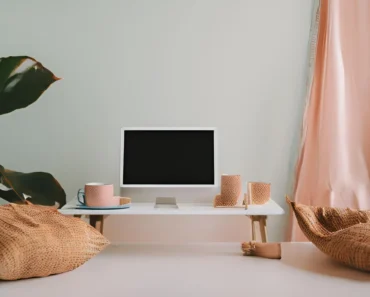Digital Overload: How to Protect Your Peace. This guide explores the pervasive impact of excessive screen time and constant connectivity on mental health, offering practical strategies to recognize, prevent, and recover from digital overload.
Understanding Digital Overload: More Than Just Screen Fatigue
In our hyperconnected world, digital tools permeate every aspect of life: work, communication, entertainment, and even personal relationships. While offering immense convenience, this constant digital engagement brings a hidden cost: Digital Overload. This phenomenon extends beyond simple eye strain or occasional screen fatigue. It represents a deeper state of mental, emotional, and physical exhaustion caused by prolonged and overwhelming digital stimulation.
Digital Overload manifests as a pervasive sense of detachment from online activities, cynicism towards digital communication, and a diminished sense of personal accomplishment related to screen-based tasks. Individuals may feel constantly drained, irritable, and find it difficult to focus, even away from devices. This condition mirrors traditional workplace burnout but specifically stems from the relentless demands of digital life. The continuous influx of information strains cognitive resources.
Recognizing the signs of Digital Overload is crucial for protecting mental wellness. It often develops subtly, gradually eroding well-being before becoming obvious. Understanding its mechanisms empowers individuals to take proactive steps, implement boundaries, and reclaim a healthier relationship with technology. This awareness is the first step toward preventing its silent, damaging impact.
Key Symptoms: How Digital Overload Manifests
Digital Overload affects individuals in various ways, touching upon mental, emotional, and physical well-being. Recognizing these symptoms helps in early detection and intervention, allowing you to address Digital Overload directly.
Mental Exhaustion and Cognitive Decline
One of the primary symptoms of Digital Overload is persistent mental exhaustion. Individuals feel mentally drained, even after rest. They struggle with focus, concentration, and memory. Decision-making becomes difficult. Creativity diminishes. The brain feels perpetually “on,” unable to truly switch off, leading to a state of constant overload. This cognitive strain makes everyday tasks feel more challenging and contributes to overall fatigue.
This sustained mental effort can lead to a decline in cognitive performance. It impacts both work and personal life. The inability to concentrate affects productivity and personal enjoyment.
Emotional Detachment and Irritability
Digital Overload often manifests as emotional detachment from online activities and interactions. What once felt engaging now feels tedious or annoying. Individuals may develop cynicism towards digital communication or social media. They experience increased irritability, frustration, and a diminished capacity for empathy. Small online annoyances trigger disproportionately strong emotional responses. This emotional weariness extends offline, impacting real-world relationships. It can lead to feelings of apathy or a general sense of being overwhelmed.
Physical Symptoms: The Body’s Warning Signs of Digital Overload
The body often signals Digital Overload through various physical symptoms. These include chronic fatigue, sleep disturbances (difficulty falling asleep or staying asleep), headaches, and eye strain. Muscle tension, especially in the neck and shoulders, is common from prolonged screen use. Some individuals also experience digestive issues or a weakened immune system. These physical manifestations indicate the significant stress placed on the body by constant digital engagement. They are clear warnings that the digital load is too heavy.
Reduced Personal Accomplishment and Disengagement
Individuals experiencing Digital Overload often feel a diminished sense of accomplishment. Despite spending hours online, they might feel unproductive or unfulfilled. They lose interest in hobbies or activities that once brought joy. A general sense of disengagement from work and social life can occur. This feeling of being “on” but not truly participating contributes to a loss of purpose. This lack of satisfaction reinforces the cycle of exhaustion, making it harder to break free from the digital rut.
Common Causes: Why Digital Overload Happens
Digital Overload is not a random occurrence. It stems from a combination of technological characteristics and human behavioral patterns. Understanding these causes helps pinpoint areas for intervention and manage Digital Overload effectively.
Constant Connectivity and “Always On” Culture
The expectation of being constantly available, both professionally and socially, fuels Digital Overload. Notifications constantly demand attention. Work emails arrive at all hours. Social media encourages continuous engagement. This “always on” culture erodes boundaries between work and personal life. It prevents true periods of rest and disconnection. The brain remains in a perpetual state of readiness, always anticipating the next digital input.
Information Overload and Decision Fatigue
The sheer volume of digital information is overwhelming. We constantly process emails, messages, news, social media feeds, and app notifications. This torrent of data leads to information overload. It causes decision fatigue as our brains struggle to filter and prioritize. This constant mental effort contributes significantly to cognitive exhaustion, a core symptom of Digital Overload. The brain becomes tired from endless processing.
Social Comparison and Validation Seeking
Social media platforms often foster a culture of comparison. Users see curated, idealized versions of others’ lives. This can lead to feelings of inadequacy, jealousy, or pressure to present a perfect online persona. The pursuit of likes, comments, and shares creates a constant need for external validation. This emotional labor and anxiety contribute to significant mental strain and Digital Overload. The pressure to conform becomes draining.
Lack of Digital Boundaries and Self-Regulation
Many individuals struggle to set clear boundaries for their digital device use. They use phones during meals, before bed, or during family time. This lack of self-regulation allows digital demands to bleed into all aspects of life. Without intentional limits, technology consumes time and energy meant for rest, connection, and self-care, directly fueling Digital Overload. The inability to disconnect prevents genuine recovery.
Strategies to Combat Digital Overload: Reclaiming Your Well-being
Addressing Digital Overload requires a proactive and multifaceted approach. These strategies help individuals regain control over their digital lives and foster mental wellness.
1. Implement Digital Detox Periods: Unplug and Recharge
Consciously schedule periods of complete digital disconnection. This could be a few hours each day, a full day on weekends, or even a vacation entirely free from screens. During these times, put away all devices. Engage in offline activities like reading a book, spending time in nature, or connecting with loved ones. This allows your brain to truly rest and recharge, significantly reducing the symptoms of Digital Overload. Start small and gradually increase duration.
2. Create Tech-Free Zones: Sacred Spaces for Presence
Designate specific areas in your home as completely tech-free. The bedroom and dining table are ideal candidates. This creates sacred spaces for rest, conversation, and nourishment, free from digital distractions. Consistent adherence to these zones signals that these places prioritize human interaction and personal well-being. This physical boundary helps reduce constant digital pull, directly combating Digital Overload.
3. Optimize Notifications: Reduce Digital Interruptions
Take control of your notifications. Turn off all non-essential alerts for apps that do not require immediate attention. Group notifications, use “do not disturb” modes, or set specific times for checking messages. This reduces constant digital interruptions. It allows for sustained focus on tasks or conversations without the brain being perpetually on alert. Reducing notification overload lessens a key contributor to Digital Overload.
4. Practice Mindful Device Use: Intentional Engagement
Cultivate awareness of your own digital habits. Before picking up your phone, pause and ask yourself why. Is it out of habit, boredom, or a genuine, urgent need? Set clear intentions for your screen use. For example, “I am checking this email for five minutes, then I will put it away.” This mindful approach helps reduce mindless scrolling and prioritizes real-world engagement. This personal discipline is fundamental for managing Digital Overload.
5. Schedule Offline Activities: Cultivate Real-World Joy
Actively plan and engage in activities that do not involve screens. This could include reading a physical book, spending time in nature, pursuing a hobby, exercising, or connecting with loved ones face-to-face. These real-world experiences provide mental breaks, foster creativity, and offer a sense of fulfillment that digital engagement often lacks. They are crucial for countering Digital Overload.
6. Implement a Digital Wind-Down Routine: Prepare for Rest
Establish a consistent digital wind-down routine before bed. Avoid screens for at least one hour before sleep. The blue light emitted by devices interferes with melatonin production, disrupting sleep patterns. Instead, read a book, listen to calming music, or meditate. This prepares your mind and body for restful sleep, which is vital for recovering from Digital Overload.
7. Seek Professional Support: When Overwhelmed by Digital Overload
If symptoms of Digital Overload significantly impact your daily life, relationships, or overall mental wellness, consider seeking professional support. A therapist or counselor can provide tailored strategies, such as cognitive behavioral therapy (CBT), to address underlying anxiety, manage stress, and develop healthier coping mechanisms. They offer guidance in building a sustainable relationship with technology. This professional help provides crucial support.
Read Also: Can AI Chatbots Ease Loneliness? The Truth
Budgeting for Digital Well-being: Investing in Your Mental Health
Addressing Digital Overload does not require large financial outlays. Many effective strategies are free or low-cost, proving that investing in your digital well-being is accessible to everyone.
Free Strategies: Leveraging Awareness and Discipline to Combat Digital Overload
Many powerful strategies cost nothing. Practicing mindfulness about phone use, setting personal boundaries, optimizing notification settings, and actively engaging in offline activities are all free. These behavioral shifts are highly effective in reducing Digital Overload. They emphasize personal discipline and awareness. This proves that intentional effort is the most valuable investment.
Affordable Tools: Apps and Books for Support
Numerous apps offer features for digital well-being, screen time tracking, or mindfulness exercises (some free, some subscription-based, usually under $10/month). Books on digital wellness, anxiety management, or habit formation also provide valuable insights, often available from libraries or as affordable e-books. These tools support your efforts without significant expense. They can be good companions in managing Digital Overload.
Professional Support: A Worthwhile Investment for Digital Overload Recovery
If Digital Overload severely impacts your life, relationships, or overall mental well-being, professional therapy is a worthwhile investment. Costs vary. Many therapists offer sliding scale fees. Health insurance often covers a portion of therapy costs. Online therapy platforms can also be more affordable than in-person sessions (typically $60-$150/session). This investment provides personalized guidance for lasting change and recovery from Digital Overload.
Caring for Your Digital Habits: Nurturing a Calmer Mind
Maintaining healthy digital habits requires ongoing self-awareness and consistent effort. Nurturing a calmer mind in the face of constant digital communication is an investment in your overall well-being. This proactive care helps combat Digital Overload effectively.
Regular Digital Check-ins: Self-Assessment
Periodically assess your own relationship with your devices. How often do you check them? Do you feel anxious if you do not receive immediate replies? Are your online interactions truly fulfilling? These self-check-ins help identify patterns contributing to Digital Overload. They allow you to adjust your habits proactively. This regular review helps maintain a healthy balance and prevent digital overload.
Practice Digital Detoxes: Short Breaks for Clarity
Consider regular, short digital detoxes. This might be a few hours each day, a full day on weekends, or even a week-long break during vacation. Stepping away from screens completely helps reset your relationship with technology. It allows your mind to decompress and reduces the constant mental alerts associated with Digital Overload. These breaks offer clarity and a renewed perspective.
Communicate Boundaries to Others: Mutual Respect
If you are practicing digital boundaries or a slower response time, communicate this to close contacts. A simple message like “I am trying to be more present, so I might not reply immediately” can set expectations. This fosters mutual respect and reduces their potential overthinking about your response times. This open communication supports your efforts and reduces anxiety for both parties. This helps in the shared management of Digital Overload.
Latest Innovations in Digital Well-being Tools
The technology industry increasingly recognizes the impact of digital habits on mental health. New innovations offer tools and features designed to support digital well-being and combat issues like Digital Overload.
Integrated Screen Time Management Features
Smartphone operating systems now include built-in features for screen time tracking and management. Users can monitor their app usage, set daily limits for specific apps, and schedule downtime. These tools provide data to raise awareness about digital habits that might lead to emotional masking. They offer automated ways to enforce personal boundaries, helping to reduce Digital Overload.
These features empower users to take control of their digital consumption.
Mindfulness and Digital Detox Apps
A growing number of apps focus specifically on mindfulness, meditation, and digital detoxes. They offer guided exercises to help users be present. They provide tools to block distracting notifications temporarily. Some apps even gamify the process of reducing screen time, making it more engaging. These resources actively help manage Digital Overload.
These tools provide practical support for developing healthier digital habits and improving mental resilience.
AI-Powered Digital Assistants for Well-being
Emerging AI tools explore proactive support for digital well-being. These AI-powered assistants might analyze your digital usage patterns. They could then offer personalized recommendations for breaks, suggest alternative offline activities, or provide gentle nudges towards healthier habits. This type of AI could provide proactive support in managing digital demands.
This innovation aims to help individuals maintain a healthier balance between their online and offline lives, countering Digital Overload.
Making Your Final Decision: Cultivating Calm in the Digital Age
Conquering Digital Overload requires intentional effort and a commitment to transforming your relationship with digital technology. Focus on strategies that promote mindfulness, clear boundaries, and emotional well-being.
Prioritize setting digital boundaries. Choose tech-free times and zones. This creates invaluable space for presence and reduces the constant pressure to be online.
Consider the clarity of your communication. Opt for richer mediums like phone calls for important or sensitive topics to minimize ambiguity. This reduces the risk of overthinking and misunderstandings.
Do not overlook the power of self-awareness. Challenge anxious thoughts when they arise. Understand that a delayed response often has nothing to do with you. Your interpretation shapes your anxiety.
Remember, the goal is not to eliminate technology, but to make it a tool that serves you, not stresses you. When you manage Digital Overload effectively, you gain peace of mind and improve your overall quality of life.
Embrace Calm: Reclaiming Your Mental Wellness from Digital Overload
Digital Overload is a common modern challenge, but it is one you can actively manage. By understanding its causes and implementing conscious strategies, you reclaim control over your digital interactions and protect your mental wellness.
Take time to practice digital boundaries. Choose your communication medium wisely. Remember that your peace of mind is paramount in the hyperconnected world.
As you embark on this journey toward calmer digital habits, remain patient with yourself. Adapting ingrained behaviors takes consistent effort. Every step toward mindful use reduces anxiety and exhaustion.
By applying these insights, you transform your relationship with technology. You reduce overthinking. You foster clearer communication. You enjoy stronger, more authentic connections, free from the grip of Digital Overload.
Frequently Asked Questions About Digital Overload
What are the main symptoms of Digital Overload?
The main symptoms of Digital Overload include mental exhaustion, increased irritability, difficulty focusing, physical symptoms like eye strain and sleep disturbances, and a general sense of detachment or disengagement from online activities.
What causes Digital Overload?
Digital Overload is often caused by constant connectivity, information overload, the pressure of social comparison on digital platforms, and a lack of clear boundaries for device use. These factors lead to persistent mental and emotional strain.
How can I start a Digital Detox to combat burnout?
To start a Digital Detox, begin with small steps: set tech-free times (e.g., during meals, before bed) and create tech-free zones (e.g., bedroom). Turn off non-essential notifications. Gradually increase your unplugged periods.
Are there apps to help manage Digital Overload?
Yes, many apps offer features for screen time tracking, digital well-being, mindfulness exercises, and setting app limits. These tools can help raise awareness of your digital habits and provide automated support for setting boundaries.
When should I seek professional help for Digital Overload?
If Digital Overload significantly impacts your daily life, relationships, job performance, or leads to severe symptoms like persistent fatigue, anxiety, or depression, consider seeking professional help from a therapist or counselor.





